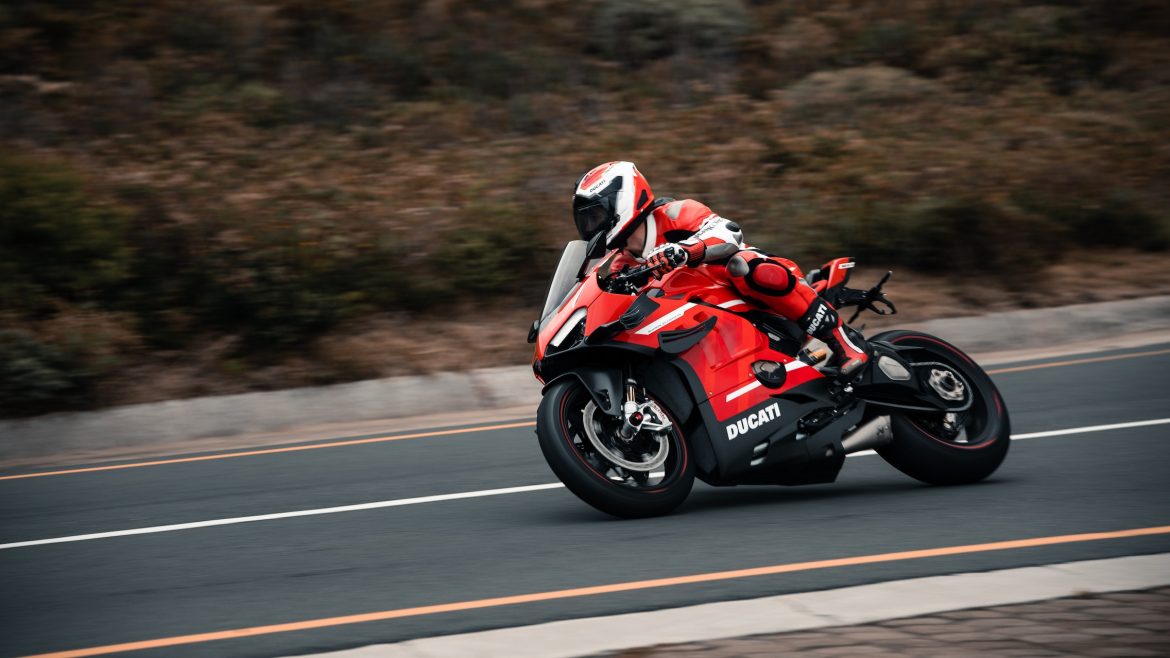I wonder if you knew that motorcycle helmets of today can be made with carbon fibre and Kevlar composites. Well, I wouldn’t be surprised if you knew it, since most of the information is either available on the internet or one inquires about them before buying a helmet that can safeguard their top shelf with some surety.
But, am I here to tell you only that? If I did, I myself would opt for a nickname – a boring tard!
Instead, I am here to take you on a nostalgic journey, and let me also take this opportunity to give this movie a title of my liking; Your Brain Is Not A Melon!
Ehh, that sounded cheesy, didn’t it?
So let’s just assume you did not read that and start our journey towards – The Evolution of The Helmets!
That sounded grand – or did it?
There is no dramatic story behind the amalgamation of motorcycles and helmets. The theory was simple and logical, that there is a relationship between these two; it being – safety! And it needed to be addressed.
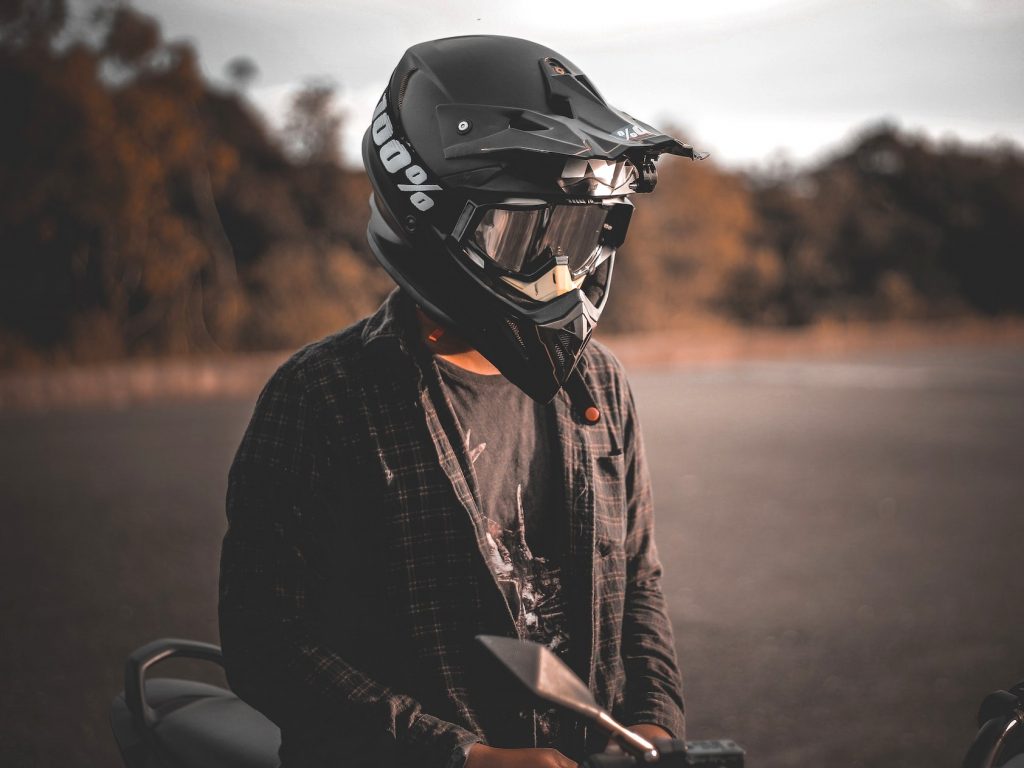
History is full of interesting stories, and the more you browse through the pages, the more the chance that it will leave you astonished.
One such story is that of the first-ever motorcycle that the world saw when Sylvester Howard Roper attached a small steam engine to a bicycle made of wood, way back in 1867.
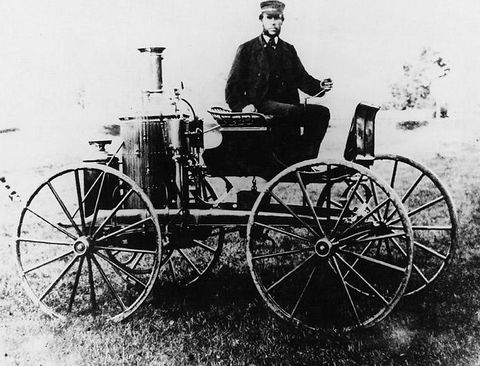
However, the first with a combustion engine came into existence, thanks to, Gottlieb Daimler and Wilhem Maybach, in 1885 – the future founders of Mercedes – who called it the “Reitwagen”; translating as “riding car”.
This was the time, that brands like Harley, Triumph, Indian, and Norton, started to bring out some bad, mean, and lean boys onto the streets, and as these giants chased faster speed via their machines, injuries resulting from accidents where riders lacked head protection began to surface.
Not a few, but a lot!
So, when was the first motorcycle helmet in history invented?
Check out the following timeline in the infographic below, before I take you through the details.

As I showed you in the infographic above, it was way back in 1914.
The list of people getting injured in motorcycle accidents was increasing at a great pace and surprisingly, the idea to avert these did not originally come from an auto giant, but from a British physicist named Eric Gardner.
And no his invention, did not go unnoticed like that of Dr. Sheldon Cooper, (from The Big Bang Theory), whose ideas never materialized until the finale season, which saw him winning a Nobel Prize.
In fact, it was Dr. Gardner who succeeded in making helmet usage mandatory for riders participating in the Isle of Man’s TT races in 1914.
But like every other invention at first, the helmets that were being made were very basic, typically crafted from leather or hides.
What was also disappointing at the time, was the way people ignored this new invention that could save their lives. The widespread adoption of helmets failed to materialize beyond racing circles, and its mandatory usage was still an issue.
And Then Came Some More Changes
Superman once said in his movie – “There is a right and wrong in the universe. And the distinction is not that hard to make.”
And something had to go wrong, for things to be set right.
A pivotal turning point emerged in 1935 following the tragic demise of a national hero; T.E. Lawrence, better known as Lawrence of Arabia. His death resulted from injuries sustained in a motorcycle accident, underscoring the peril of riding without proper protective gear. And we all know, there are any number of ‘accidents’ that can happen, if you do not wear the right protection, isn’t that correct?
Dr. Hugh Cairns was the name of the doctor who treated Lawrence and conducted a thorough study post his death. And, to no one’s surprise, he discovered a direct link between brain injuries and accidents where no protective helmet was worn.
Such was the impact of this accident, and the death of a national hero that the British Army mandated helmets for motorcycles in 1941.
Having said that, these initial official helmets were made from rubber and cork and still needed a lot of improvement.
It wasn’t until 1953 that Charles F. Lombard, a researcher in the United States Air Force, patented the first motorcycle helmet with a contemporary design: a rigid outer shell and interior padding – much like the armor of the best superhero ever – The Iron Man – tough on the outside and a softie inside.
And Then Came AGV
Post the Second World War, the first specialized manufacturers began to emerge. One of the European pioneers was the Italian company AGV, which would go on to become one of the best brands of moto safety accessories in the world.
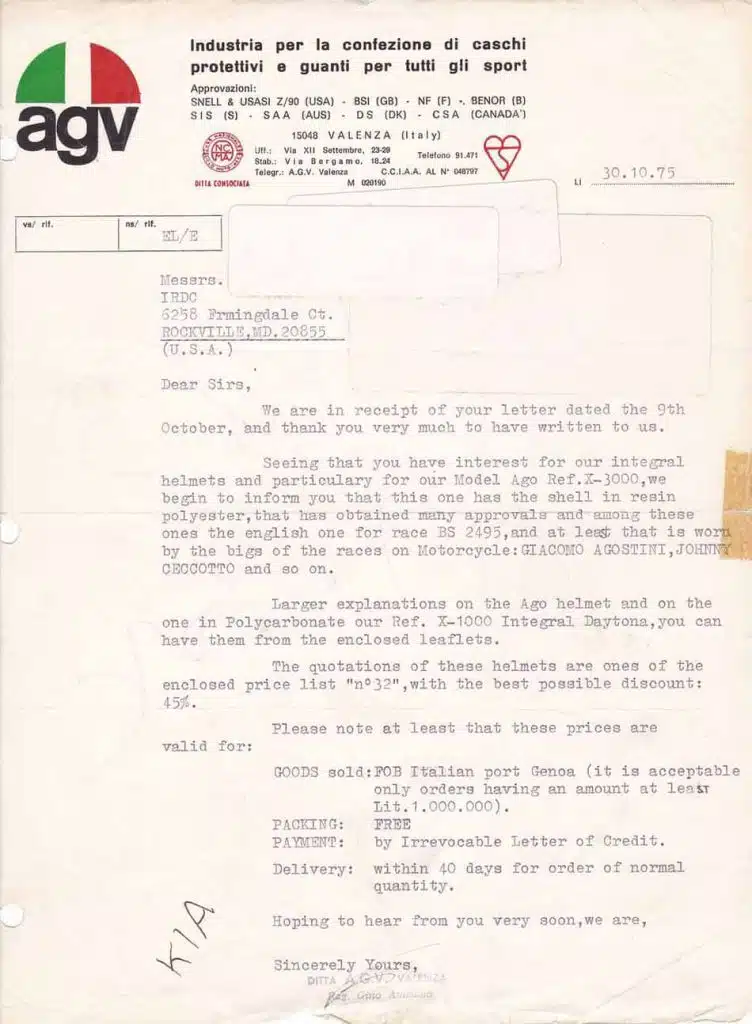
Founded in 1947 by Gino Valenza in Amisano, which gave rise to the name AGV, they initially manufactured motorcycle seats and later expanded into accessories, including helmets.
Come 1954, the Italian brand had already produced the inaugural motorcycle helmet constructed from fibre.
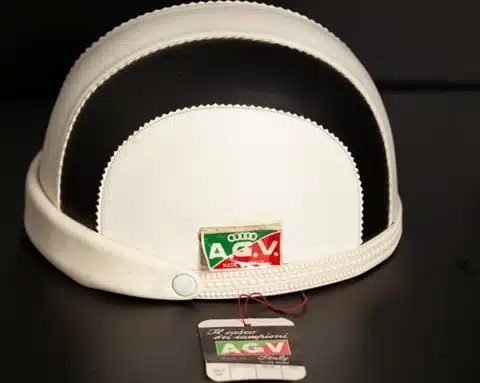
The utilization of this material marked a significant advancement and would go on to become the benchmark of the industry – to date.
But AGV wanted to do more, and just two years later, they came out with the first ever motorcycle jet helmet, a revolution in motorcyclist safety.
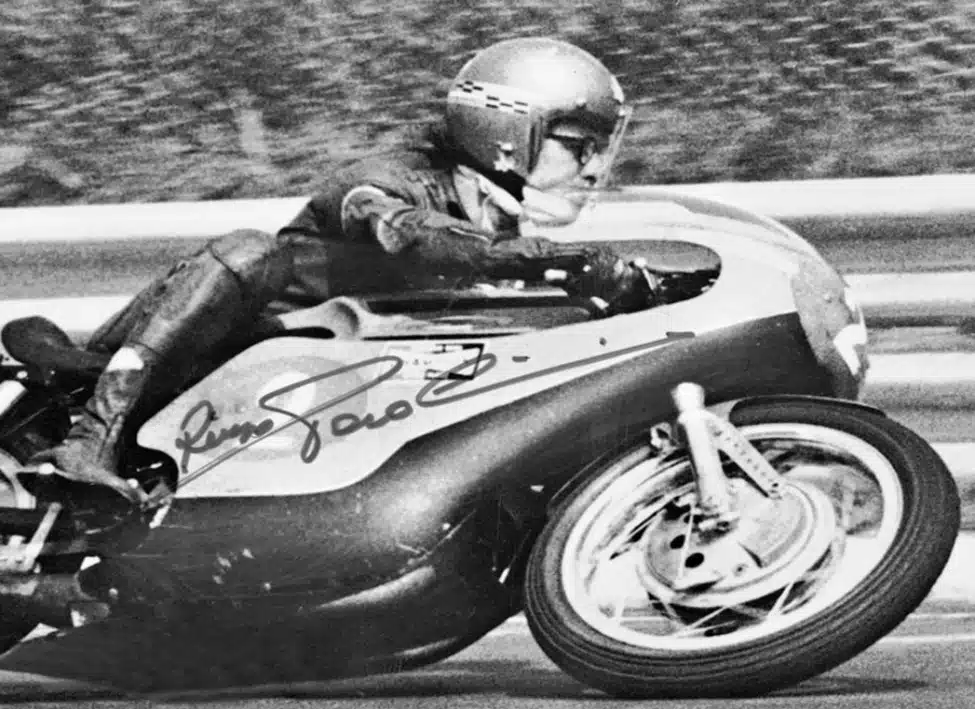
This led to more brands opening shops, as well as their brains, to come up with better helmets that could safeguard the humans riding these dangerous machines named motorcycles.
Names like Bell, Arai, and Shoei – names that rule the industry even today.
Things Get Serious
In 1957, the non-profit organization, the Snell Memorial Foundation, was established. This entity played a pivotal role in interpreting and establishing safety standards for motorcycle helmets in the United States. Presently, Snell certification stands as one of the most rigorous benchmarks a motorcycle helmet can attain.
Fast forward, to 1966, and the world saw a great jump in the safety standard as, the American National Safety Standard for Motorcycle Helmets, introduced one of the most widely adopted safety standards for all motorcycle helmets, marking the advent of homologation. However, the pioneering leap in road safety was taken by Australia, which mandated their usage as early as 1961.
Here’s a fun fact that you would love. Despite being a key proponent in recognizing the media and scientific significance of helmet use, and the British Army enforcing head protection for motorcyclists during the Second World War, the United Kingdom did not mandate them until 1973 (talk about being slow on a matter of – speed kills).
Design And Material Changes
As more and more motorcycle manufacturers came into existence, it automatically resulted in bolstering rider safety. In 1967, Giacomo Agostini and AGV, yet again, reshaped the history of motorcycle helmets during an official race by donning a full-face motorcycle helmet, akin to today’s models.
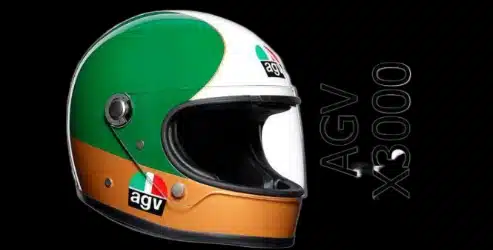
Talking about significant strides, in 1968, Bell led the way by introducing the Bell Star model, the first full-face helmet to hit the market. Simultaneously, off-road helmets also came into existence.
Until then, there was no difference in what people rode on and off-road.
These off-road helmets began featuring visors to shield against stones and debris, eventually evolving into today’s full-face off-road helmets – that keep your skin glow protected – thus, helping you maintain the shine you worked so hard on in front of the mirror (at least I did).
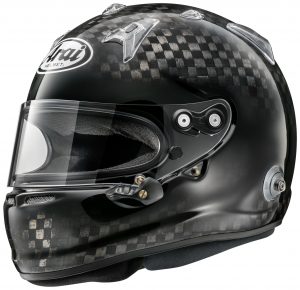
ARAI GP-7SRC
Safety Guidelines
With time, and of course, with the advancement in technology, the motorcycle and helmet manufacturers have been able to improve the quality of the helmets that are being offered to the consumers – which is also due to the fact that safety standard criteria across the world have also become much tougher.
Furthermore, helmets must pass various homologations, including the ECE 22.05 standard in Europe and the DOT standard in the United States.
These mandatory certifications ensure helmets have undergone rigorous testing and meet the required strength criteria.
Consequently, motorcycle helmets undergo continuous development and research, enhancing rider safety day by day and making sure your brain doesn’t become a melon.
Ride safe, stay safe, and– Helmet On!

